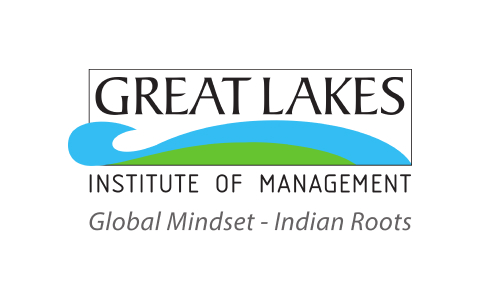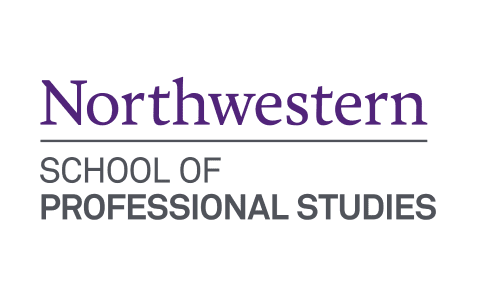Great Learning
Link hear👉 https://j8wy8.app.goo.gl/kzuZLhR5f8fXsSJE9
Python for Machine Learning
Secure a score in the leading technology domains by taking this Python for Machine Learning course. Master NumPy and Pandas tools and techniques for arrays, intersection, objects, and functions for free online.
What you learn in Python for Machine Learning ?
About this Free Certificate Course
Course Outline
Our course instructor
Mr. Bharani Akella
Data Scientist
WITH THIS COURSE, YOU GET
Free lifetime access
Learn anytime, anywhere
Completion Certificate
Stand out to your professional network
1.5 Hours
of self-paced video lectures
Frequently Asked Questions
Python for Machine Learning Course
Python is an object-oriented, high-level, general-purpose programming language preferred by most developers. Its design philosophy focuses on code readability and significant identification. Professionals who are freshers in programming start learning and practicing code with Python. Its simplicity, versatility, and community support are the essential features for Python's popularity. It has a wide range of libraries to simplify coding in Python further. Also, enroll in a python projects course to help organize your source codes and much more.
Machine learning is a domain of study that deals with understanding the machines, the inputs fed into the system, and the approaches used to solve a particular kind of problem. When the machine comes across a similar kind of problem in the later while, it automatically links back to the previously trained models and works in a similar fashion. This reduced both time and effort spent working with similar problems. Python is the best choice for Machine Learning since its constructs, and object-oriented methods are leveraged by programmers to write clean, logical codes for small and large-scale projects.
What is a Library in Python?
A library is a set of pre-programmed codes used to reduce the time required to code. Libraries eliminate the need to write codes again and again from scratch by accessing pre-written codes used frequently. Like a physical library, a Python library is a collection of reusable resources with a root source. This makes the foundation of most of the open-source python libraries.
Why should you choose Python?
Python is the best choice because it has become the preferred programming language and enables the programmer to work with machine learning applications. Python is swift compared to other programming languages, the syntax is more straightforward, and the pre-existing libraries eliminate the need for coding every logic from scratch.
Python is a swift compiler, and since it is java-based, programmers will be able to extend its applications beyond analytical research, analytical modeling, and statistical modeling. Web applications created using Python can be integrated directly into the analytical models in the background.
Python could be easily integrated with other platforms and programming languages. This typical object-oriented programming architecture wherein existing IT analysts, developers, and programmers can easily transition to the analytics domain. As the coding structure in Python is object-oriented programming architecture, it has excellent documentation support.
7 Reasons for Choosing Python
- Readable and Maintainable Code
- Multiple Programming Paradigms
- Compatible with Major Platforms and Systems
- Robust Standard Library
- Open Source Frameworks and Tools
- Simplified Software Development
- Test-Driven Development
Importance of Python for Machine Learning
Machine Learning applications improve traditional processes across industries and solve some of their pressing problems efficiently. Enabling better personalization, improved search functionality, and more glowing recommendations and Python has been instrumental in all developments. Some of the essential features that make it the best choice for machine learning are:
Simplicity and Consistency
Python provides precise and reliable code that is easy to learn and implement. Machine learning models run on complex workflows and algorithms, and Python's simplicity enables the developers to write error-free reliable codes. When working with Python, the effort and time spent on understanding and implementing the code reduces. Developers can focus their energies on solving ML problems instead of focusing on the technical nuances of the programming language.
Also, Python enables collaborative implementation, and multiple developers can work together on a single project simultaneously. It is a general-purpose language; therefore, it performs complex ML tasks seamlessly and allows quick prototyping and product testing.
Range of Libraries and Frameworks
It is tricky to implement machine learning algorithms. But with a well-structured and well-tested environment, coming up with solid coding solutions is possible. Some of the libraries are:
- Scikit Learn: used to implement linear and logistic regression, classification, clustering, and more
- Tensorflow: for setting up and training artificial neural networks with massive datasets for deep learning applications
- Keras: allows fast calculations and prototyping
- Matplotlib: helps with visualization using charts, 2Dplots, and histograms
- Numpy, Scipy, Pandas: any of the three could be used for high-performance scientific computing and data analysis
- NLTK: helpful while working with computational linguistics and natural language processing and recognition
- Scikit-image: for image processing
- Pybrain: for unsupervised and reinforcement learning and neural networks
- Caffe: allows 60+ million images a day for deep learning applications
- StatsModels: for data exploration and statistical algorithms
Platform Independence
Python is supported by all platforms, including Linux, Windows, and macOS. Python codes are utilized to write standalone executable programs. Also, software built on Python could be easily distributed and used on these platforms without an interpreter.
Some organisations use their dedicated machines to train their ML models. For such organisations, Python is platform-independent, making it easier and cheaper to train the models.
Flexibility
Python gives programmers a choice between OOPs and scripting, and it eliminates the need for recompiling source code so that the developers can implement changes with immediate results. Developers can also combine Python with other programming languages to reach their desired goals.
Python provides an option for choosing programming styles as well. The programming styles are: Imperative Style, Functional Style, Object-oriented Style, Procedural Style.
Python has the slightest possibility of errors in comparison to other programming languages.
Better Visualization
Python's vast range of libraries provides better visualization. For those who work in the domains of artificial intelligence, machine learning, or deep learning, it is important to represent data in human-readable form. Hence, Python is essential for these professionals and developers.
Matplotlib is a Python library that allows data scientists to represent data in the form of histograms, plots, and charts for effective representation. Such visualizations provide better comprehension for the stakeholders who carry less or moderate knowledge of machine learning.
Best Way to Learn Python?
Python is very easy to learn and hence very popular. To start with, you can sign up for a python and machine learning course for beginners. Once you understand the basics and what you need to learn in python and machine learning, you can sign up for an advanced professional course in these domains.
It is also essential to work on machine learning projects in Python and build machine learning systems with Python. This will help beginners develop a better understanding of the subject. It would require about six to eight weeks to learn Python basics, including syntax, keywords, functions, classes, data types, coding basics, and exception handling.
Depending on the nature of work, one can develop advanced skill sets specific to their role. Advanced skills include multithreading, socket programming, database programming, synchronization techniques, etc.
.jpeg)
























0 Comments